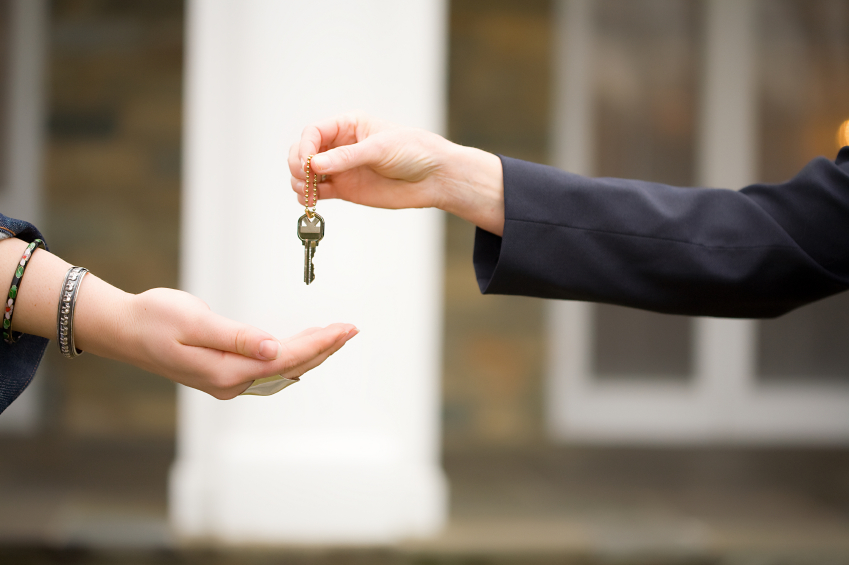Free shipping on orders over £50
TradeHURRY! SPRING SALE Now On! Get 10% Off Using Code KEEP10! Plus FREE SHIPPING On All Orders Over £50!
The Reason That LED Bulbs Are A Landlord’s Best Friend
 If you’re a landlord, you may be aware that, since the 1st October 2008 it has been necessary for all new rental properties in England and Wales to register for an Energy Performance Certificate (EPC).
If you’re a landlord, you may be aware that, since the 1st October 2008 it has been necessary for all new rental properties in England and Wales to register for an Energy Performance Certificate (EPC).
The certificate looks very similar to the energy rating labels used on electrical appliances, and it means that prospective tenants can see at a glance how energy efficient and environmentally friendly your property is.
The Environmental Performance Certificate
Here’s an example and, as you can see, the red band shows the least energy-efficient property with the lowest score, whereas the dark green band has a score of 92 or more.
 Remember that a property with a good energy rating lets a prospective tenant know two things.
Remember that a property with a good energy rating lets a prospective tenant know two things.
The first is that the energy bills they’ll be required to pay will be lower, and the second is that the level of maintenance you carry out on the property is high.
These two factors alone can mean the difference between a person becoming your tenant or not, so it’s a good idea to try to score as highly as possible.
There are a number of different ways to ensure that your rental property is more efficient, most of which can be found in a list compiled by the National Landlord's Association (NLA). One of the best places to start, however, is with the lighting.
Replace Your Inefficient Bulbs With LEDs
Replacing wasteful incandescent light bulbs with energy-saving LED lights is one way that’s guaranteed to reduce the energy requirements and therefore, the energy bills of a property.
It’s an incredibly simple procedure, as the vast majority of LED bulbs are what’s known as ‘Retrofit’. This means they share the same fittings or ‘caps’ and dimensions as your existing bulbs, so you can swap them straight over.
Unlike Compact Fluorescent Lamps (CFLs), LED bulbs consistently achieve a high lumen output for the full duration of their lifespan, which means you won't be compromising on light quality either.
Superior Energy-Savings
A prime example of an LED bulb’s superiority over a halogen is the best-selling 3.3W, GU10, 80 SMD LED Bulb. Its lifespan is incredibly long, with an average of 50,000 hours and, during the course of its lifetime, it can be expected to comfortably outlast more than 20 incandescent bulbs.
The fact that it requires only 3.3W of electricity to produce the same 400 lumens as a 50W traditional bulb, means it will reduce the electricity consumption of the property by more than 90%.
Therefore, replacing 10 x incandescent 50W bulbs with 10 x 3.3W GU10s around the property could entail huge savings, as this simple equation will attest:
Assuming an electricity cost of 13.75 pence per kW/h (Kilo watts per hour) and with both sets of bulbs working for 8 hours a day for 365 days.
- The 10 x 50W Incandescent Bulbs use 1460.00 kW/h and cost £200.75;
- The 10 x 3.3W GU10 LED Replacement Bulbs use 96.36 kW/h and cost £13.25;
- This means an annual saving of £187.50!!!
Reduced Carbon Emissions
Not only will LED lights and bulbs lower the energy costs of your rental property, they’ll also reduce its carbon footprint.
It’s measured by the Environmental Impact-Rating, which is a measure of a property’s impact on the environment in terms of carbon dioxide (CO₂) emissions. The higher the rating the less impact it has on the environment.
 As you’ll see from the graphic, the scale is effectively reversed, with the worst-offending properties at the top in blue, and those causing the least environmental impact at the bottom in grey.
As you’ll see from the graphic, the scale is effectively reversed, with the worst-offending properties at the top in blue, and those causing the least environmental impact at the bottom in grey.
However you plan to make your rental property more attractive to prospective tenants, you can be sure that switching to LED lights will only ever improve your energy efficiency, putting you at the top of the landlord’s league table (or at the bottom, depending upon which table you’re looking at!).
If you’d like to chat with one of our customer service advisors about energy-efficient, eco-friendly LED lights, give us a call on 0116 321 4120.
You can also send us an e-mail enquiry to cs@wled.co.uk.
If you’ve enjoyed this blog and would like to leave a comment, simply do so below. Or why not visit our facebook or twitter pages and leave a comment there?






 Search
Search



1 Comment